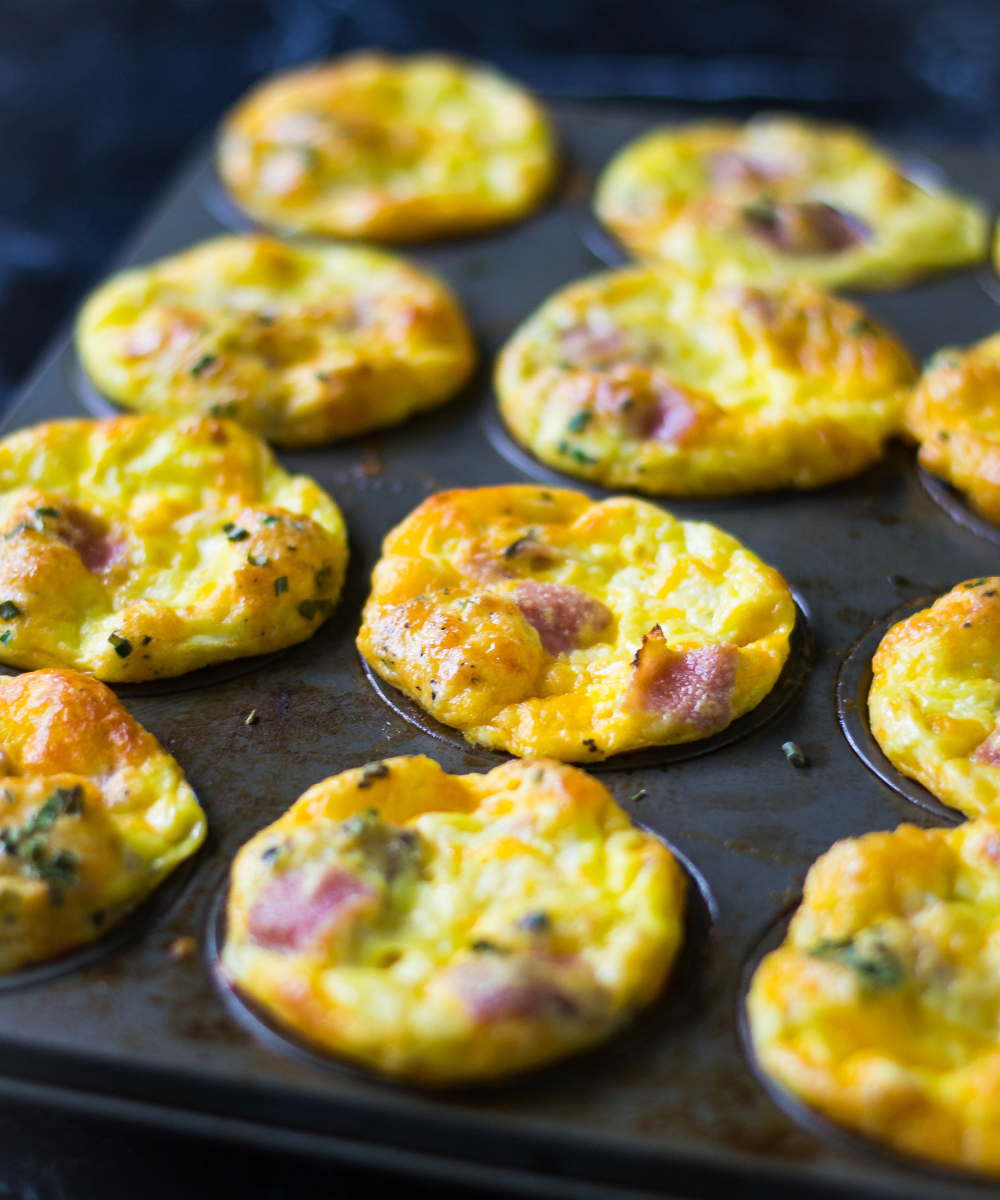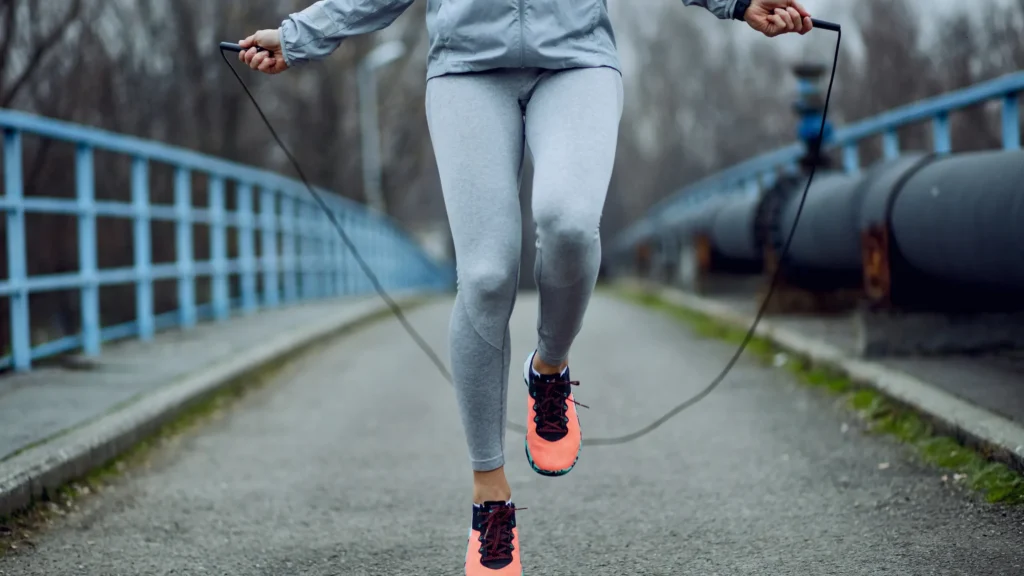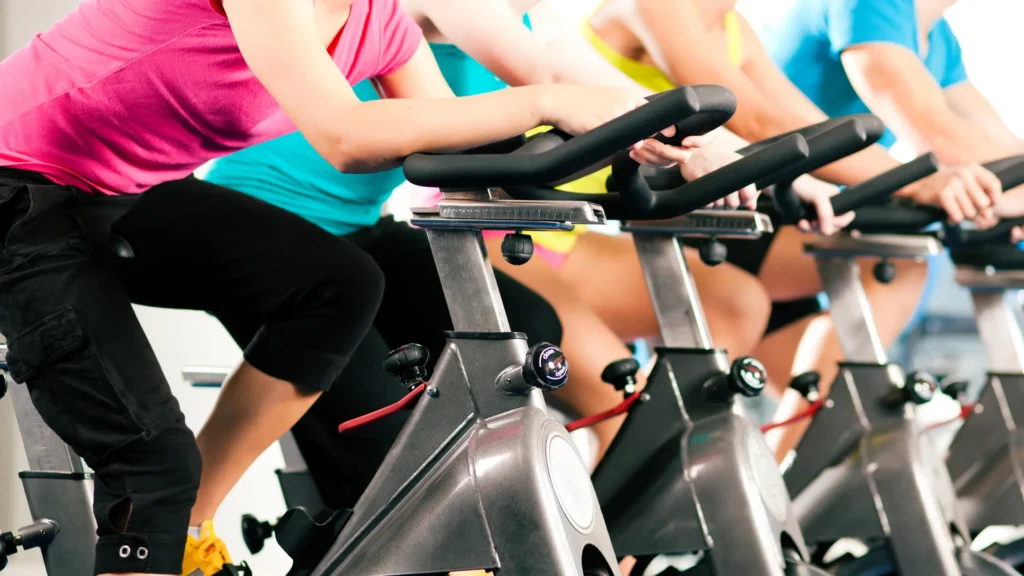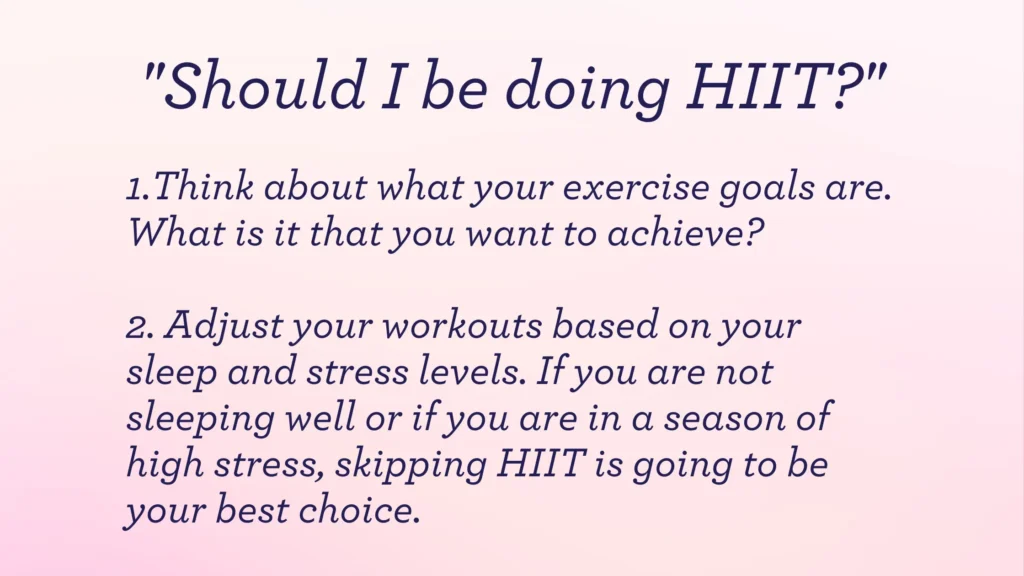
Why HIIT Training Isn’t Always a Great Idea

If you are the type of person who feels like you need to go hard or go home when it comes to your workouts….you would be better off staying home. Okay, maybe not staying home, but you can benefit from easing off the intensity a bit. Working harder isn’t always smarter. You want to make your workouts work for you, not against you!
I get it. I too love the feeling of a good workout – leaving the gym sweaty, feeling like I just won the non-existent competition for who worked out the hardest. While intense workouts can be great, they aren’t beneficial to do all the time.
If you are an avid HIIT-style gym member at places like Orange Theory, 9Round, Soul Cycle, Burn Boot Camp, or kickboxing gyms, this probably isn’t what you want to hear (this includes you too, Peloton bike owners).

If you haven’t figured it out by now, this blog is aimed to break down why HIIT isn’t always a great idea. Don’t worry – I’m not taking it away from you. But I am going to help you decide how and when you should incorporate this style of training into your workout routine.
Similar to popular mindsets around nutrition, there also seems to be an all-or-nothing approach when it comes to fitness. This type of mindset actually works against us, making it harder to reach the goals that we have for ourselves. We increase the intensity of our workouts to help us lose weight, but, instead, we actually make it harder for our bodies to lose weight. What ends up happening is many people spin their wheels, burn out, get frustrated, then give up completely.
What is HIIT?
HIIT really started to gain popularity in the 2000s, but it’s been around for much longer. It was originally designed to maximize athletic performance under conditions where the muscles are deprived of oxygen. Specifically, professional, Olympic, and collegiate endurance athletes. Studies have shown that this type of training can improve VO2 max and lactate threshold.
What many people don’t realize is that in order to see these proven benefits of HIIT, you need to be training in a very specific way. The research shows that you need to be working at 80-90% of your maximum heart rate during work efforts. Athletes are typically assessed doing 2-3 minutes of intense work with a 2-minute recovery for 6-10 repetitions. The typical everyday gym-goer is not going to be able to go 2-3 minutes at 95% or greater VO2 max for this length of time. So, not only are you most likely not working at this intensity, but you are likely not accurately monitoring this intensity either. Most gyms offer heart rate monitors and say that they monitor these things, but the reality is it is very complicated to get accurate measures of these readings outside of an exercise test lab.
The Tabata style, which has become increasingly popular, is 20 seconds of work at full effort with 10 seconds of rest for 8 cycles. This style has shorter bursts because you are expected to work even harder than typical HIIT. These 20-second bursts should leave you completely breathless, which can be hard to maintain for 8 cycles with a short rest period.
Bottom line…HIIT that is researched in an exercise lab is not the same as your typical HIIT workouts, so we cannot say that everyone has the same benefits of HIIT as research in these controlled environments shows.
With that being said, there are lots of reasons why HIIT-style workouts are appealing. For one, it seems that you can achieve all the benefits from a less intense workout in a shorter amount of time, which is great when you already feel like you don’t have time to workout. And many gyms and even trainers throw out the idea that this type of training scorches body fat. Which, without going down a science rabbit hole, is simply not true. That theory is a very oversimplified way of thinking that if you are using fat as an energy source, then you are reducing body fat. The truth is, body fat is reduced when you increase lean muscle mass. Lean muscle mass is increased with resistance training, not cardio.
If your primary goal is fat loss, then you should be focusing primarily on lifting weights. Cardio and HIIT are great to improve your cardiovascular health, which, don’t get me wrong, is extremely important. But they are not the best workouts for fat loss or for muscle growth. It should also be said that HIIT is not the only form of cardio out there.
Should I be doing HIIT?
First, you need to think about what your exercise goals are. What is it that you want to achieve? If it is fat loss, then you are going to want strength training to be your main focus. Likewise, if your goal is to feel like you can crush men’s skulls like sparrow eggs, then again HIIT is not for you. Cardio can still, and should, be incorporated, but it does not need to be HIIT. Walking is the most underrated form of cardio there is!
Second, you need to adjust your workouts based on your sleep and stress levels. If you are not sleeping well or if you are in a season of high stress, skipping HIIT is going to be your best choice. Why? Because HIIT raises cortisol, our stress hormone. Cortisol can actually be beneficial to our bodies, but when cortisol levels are high over an extended period of time (like when we are stressed or sleep-deprived), it works against us and leads to insulin resistance, increased abdominal fat storage, and weight loss resistance! These are all opposite of the claimed benefits that HIIT has for non-athletes and exactly what we DON’T want when trying to lose weight (or any other time for that matter). So, if you are a new mom, or just getting back into the fitness game, you are going to want to skip joining an interval training gym, even if the 30-minute workouts sound appealing. HIIT is never recommended for beginners or for people who haven’t worked out in a long time.

How should I be doing HIIT?
So now that I have basically told you all the reasons why you should not do HIIT, let me break down how you can add HIIT to your current routine if this is your preferred type of cardio. I will start by saying that these are my opinions of what I have seen work best not only for myself but for others. There will probably be some Trainer Brads out there who may not agree with my following recommendations, but I am a 31-year-old busy mom of 3 who helps women lose weight, feel healthier and become more confident by creating normal healthy habits – I’m not coaching Olympic speed skaters or Tour de France cyclists. If you are an Olympic speed skater or professional cyclist, thank you for reading this far, but you probably don’t need my advice on how to reach peak performance.
If you are not a college-aged Trainer Brad or Olympic athlete, here is how to make HIIT work better for you than how you are probably doing it now…
- Incorporate HIIT to the end of your workouts. Something quick that allows the benefits of HIIT without increasing your stress (AND saves time!). You should never jump into a HIIT cold. Doing it after strength training can ensure that you are warmed up and decrease your risk of injury.
- Doing 15-30 seconds of work with a 20-30 second break between sets for 3-5 minutes is a great workout finisher.
- These HIIT-style finishers should primarily be done without heavy weights or really any weights at all! Remember more is not better.
- HIIT should be cardio focused, so the use of weight really isn’t necessary. Body weight movements such as burpees, mountain climbers, jumping jacks, push-ups, jump squats, etc. work great.
- HIIT should be done 1-3 times a week max AND with 1-2 days between. I would recommend that you add a HIIT finisher to the end of one of your smaller muscle group training days such as shoulders, triceps or biceps.
- I wouldn’t recommend this on heavy or larger muscle lift days such as leg days.
If you are NOT a beginner, and check off all the boxes that make HIIT right for you…meaning you are sleeping like an angel and your stress is near non-existent (share your secrets with the class) then having HIIT-only days might be right for you. Remember, though, that these days are not replacing strength training, and if you are going to have HIIT-only days, then exclude the HIIT finisher from your lift days.
- Do a 1:2 work-to-rest ratio. Your “work” time should be a duration that you can maintain a close-to-max-intensity effort throughout. Example: 30 seconds of intense work, 1-minute rest in between.
- This can last between 10-30 minutes depending on your work-to-rest ratio.
- Start with 1 HIIT per week and work your way up to 2 sessions per week MAX. If you asked my personal opinion, I would never recommend more than 1 HIIT only day per week, but I know we are all different!
- Do not ever do HIIT fasted
- Forget what you heard about fasted cardio….just don’t do it! Not today, not tomorrow, not any day.
- Make sure you are warming up and having a proper cool down – you don’t want to go into HIIT cold.
- Never let HIIT replace strength training – I know I said this already, but it is worth the extra mention.
Just like with nutrition, you need to make sure you keep yourself in check when it comes to how you train. Always be mindful about overtraining or pushing yourself too far…
How do you know if you are overdoing it?
Signs that you are doing too much HIIT or working out too hard in general are:
- Increased injury
- Constant soreness
- Increased illness
- Disrupted sleep
- Feel exhausted, rather than energized after a workout
- Moodiness, or short-fused
- Weight plateau
- Drop in performance
Whether or not you’ve been doing HIIT 5 days a week or it’s never really been your thing, hopefully, you are able to walk away from this feeling more confident with how you plan your workout routine.
The good news is proper utilization of HIIT improves cardiovascular health, which is essential! The bad news is most of us are doing it incorrectly and/or too often.
The best way to plan your workouts is to tailor them to best fit the needs of your body and what is going to be the most beneficial for you that day/week. You may find that skipping HIIT altogether on weeks when you are really stressed with the kids or work actually works better for you. If you are someone who tracks your cycle (if you don’t, you need to check it out!), then you may find that skipping HIIT the week before your period when you are most tired (thanks, progesterone) also helps! Fitness, just like nutrition, is dynamic, and it is going to fluctuate. There is no one-size-fits-all, and for women especially, there isn’t a fitness plan that is going to work every day!
REMEMBER that exercise only accounts for about 10% of your overall daily energy expenditure, so if your workout is causing you to come home and veg out on the couch for the rest of the day feeling like a ball of goo, then it probably isn’t that beneficial. The most important thing that you can do is choose workouts that are sustainable! Choose workouts that you enjoy and that you can sustain. Do not choose workouts that are going to cause you to burn out and check out. If you haven’t learned by now, we here at Metabolism Makeover are constantly preaching consistency over perfection. So the next time you feel like you need to go hard or go home…just stay home…
…and take the dog for a walk.
Want permission to break more healthy “rules”? Download our FREE guide: “5 Healthy Habits to Break to Lose Weight.”
Brianna a.k.a TheMomminNutritionist, your MM coach who aims to keep it simple.

